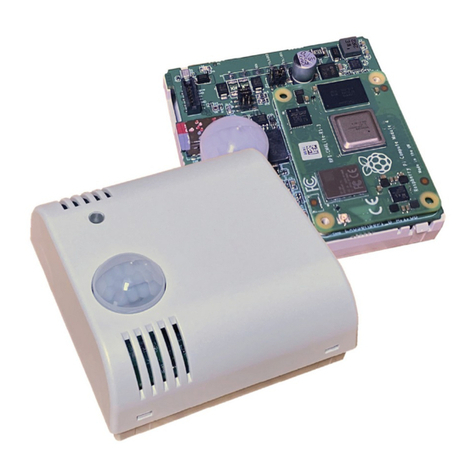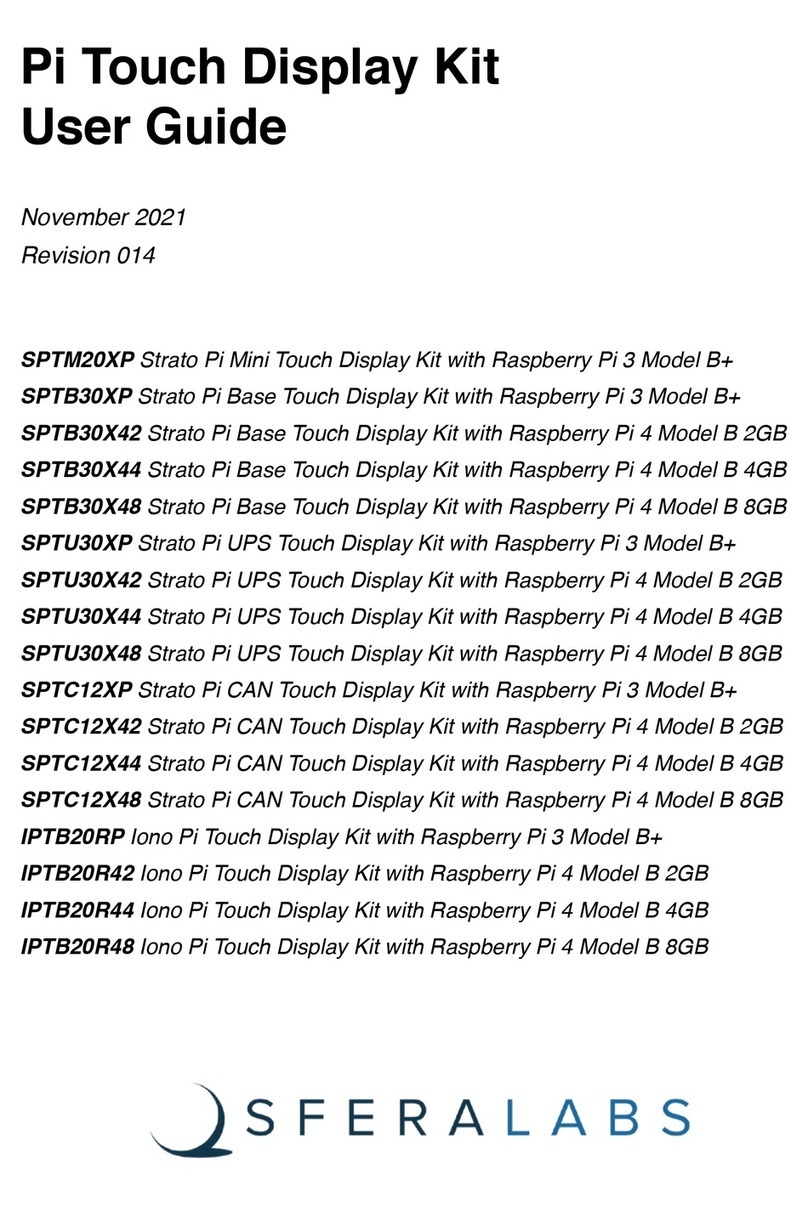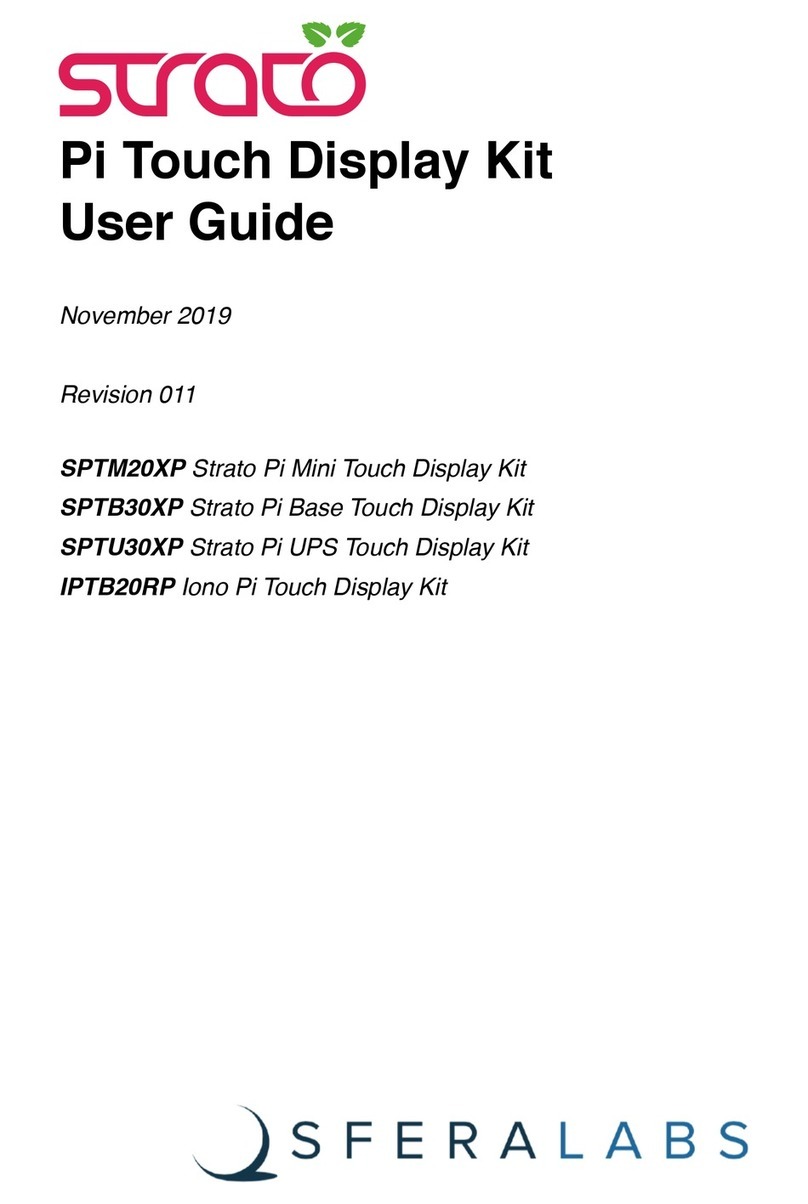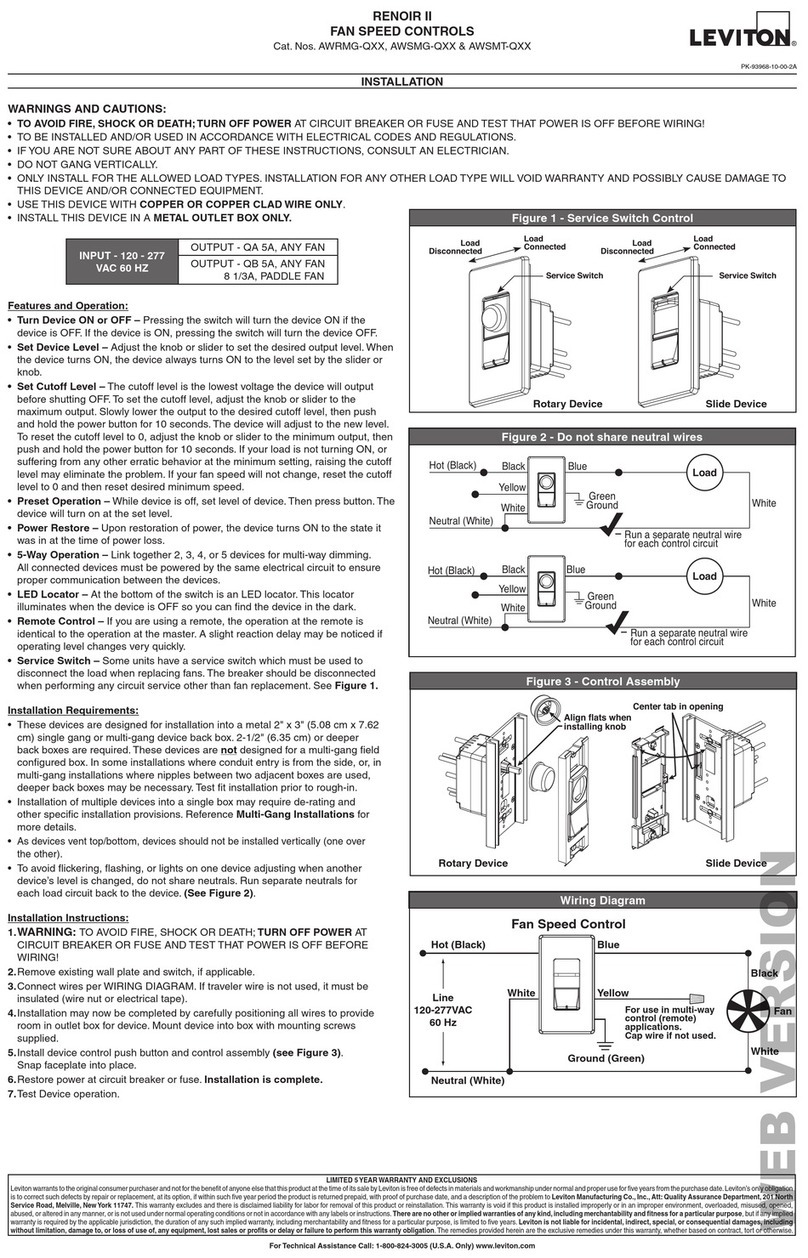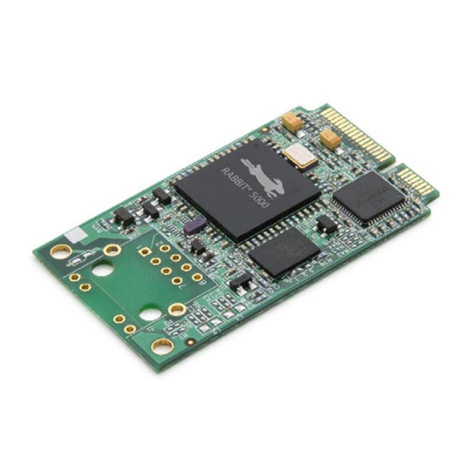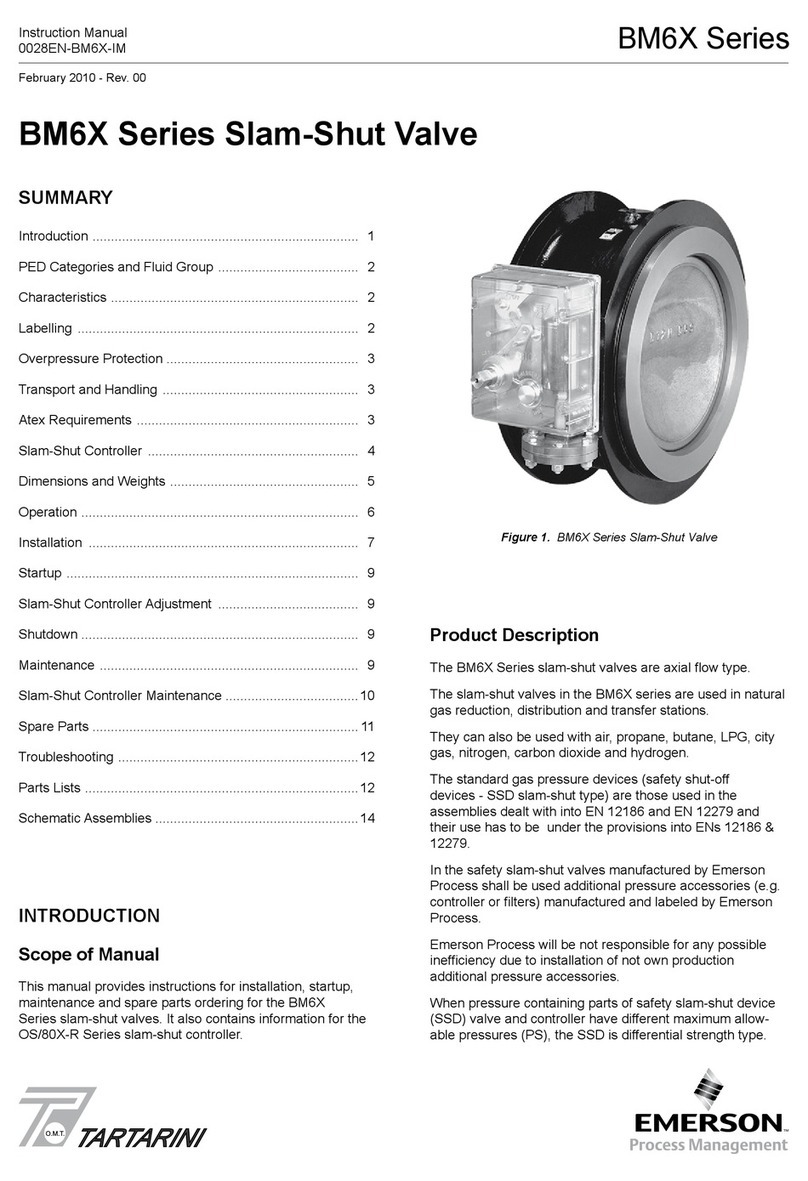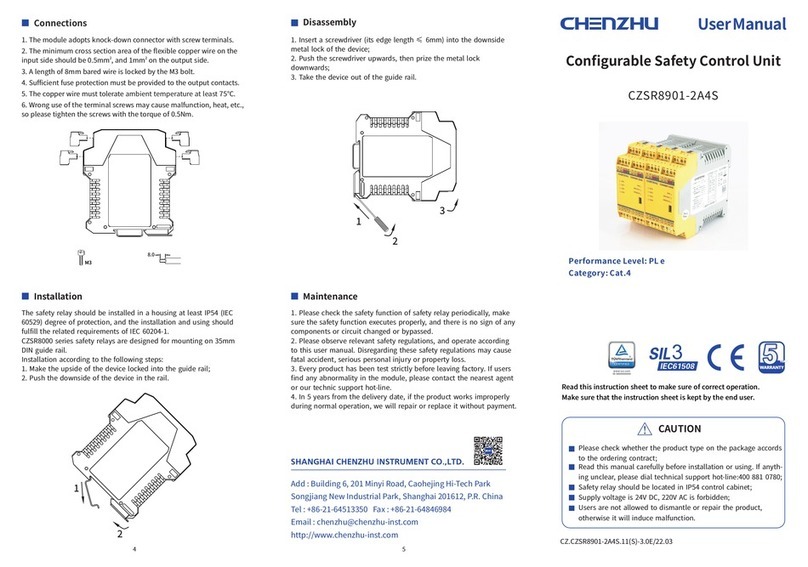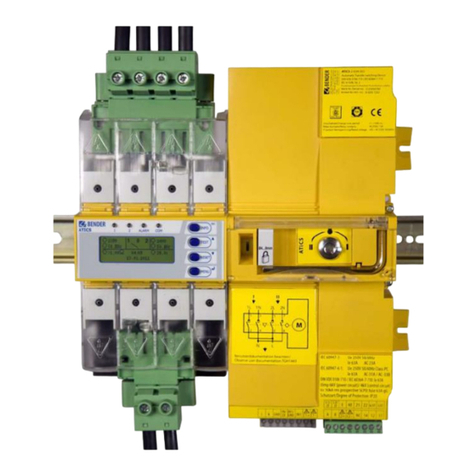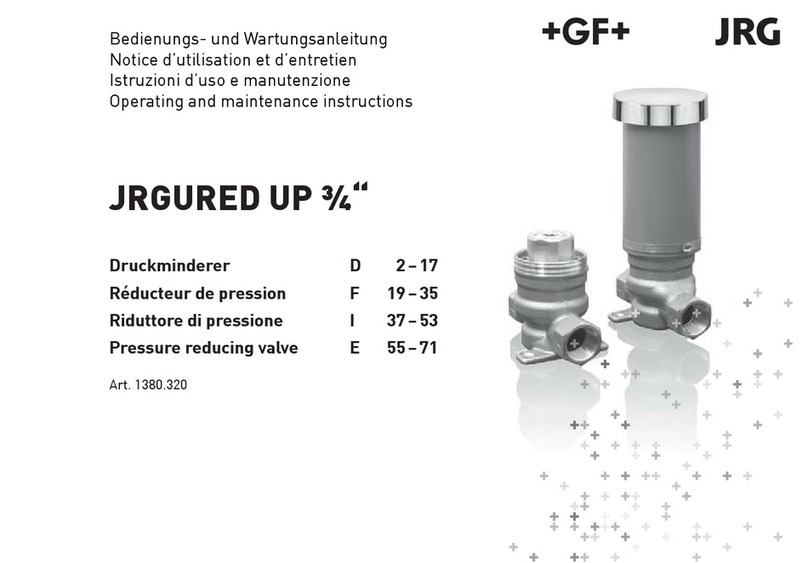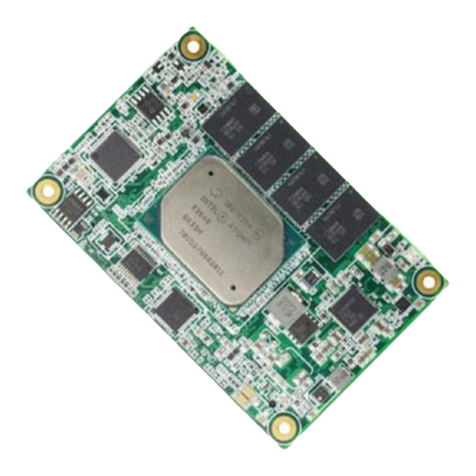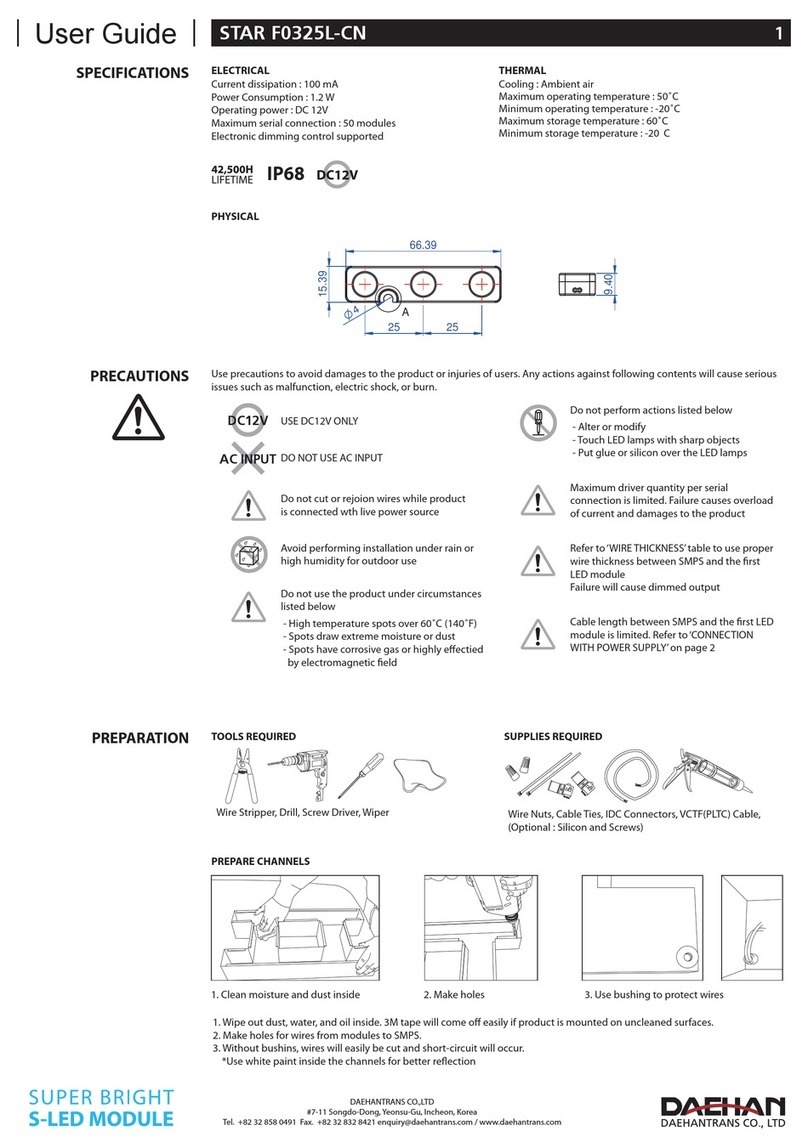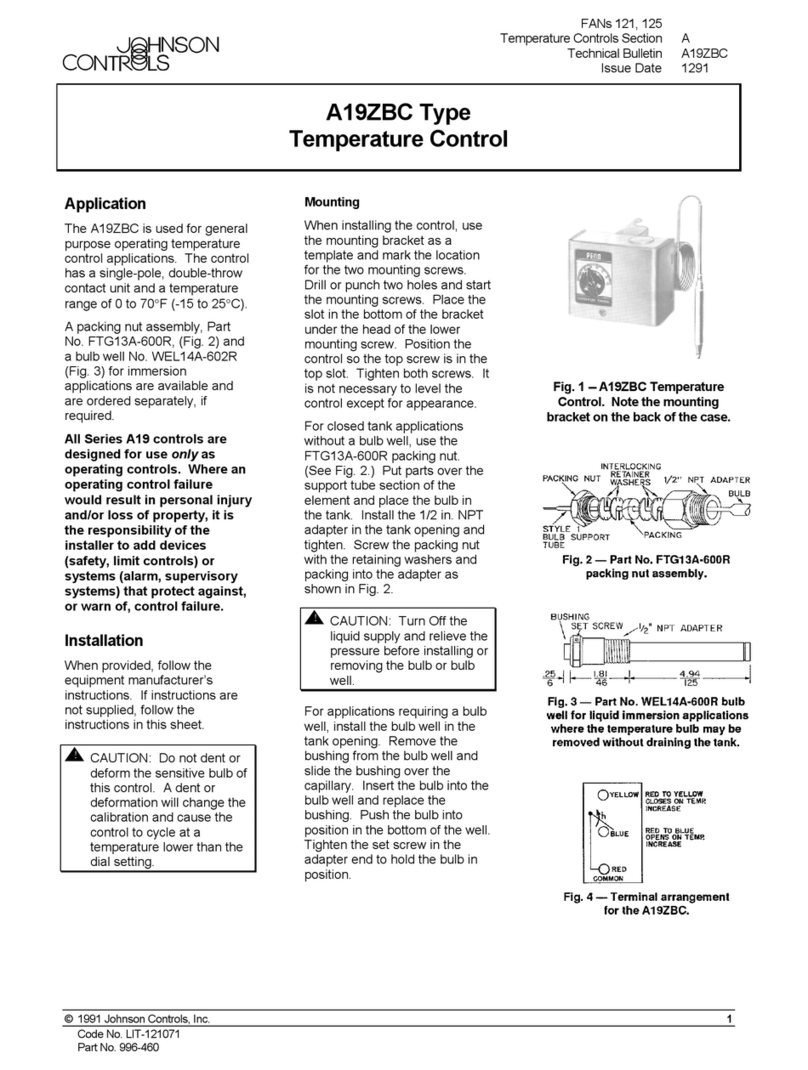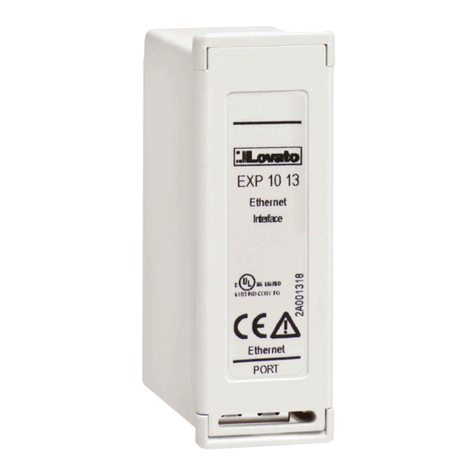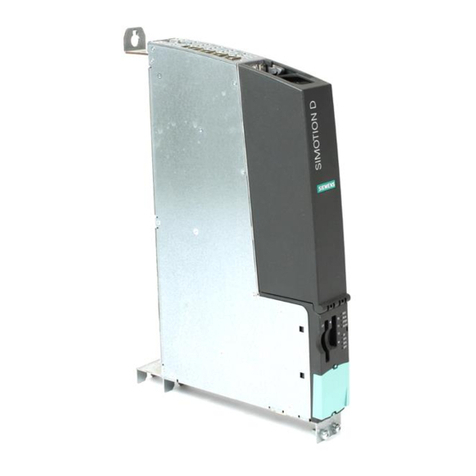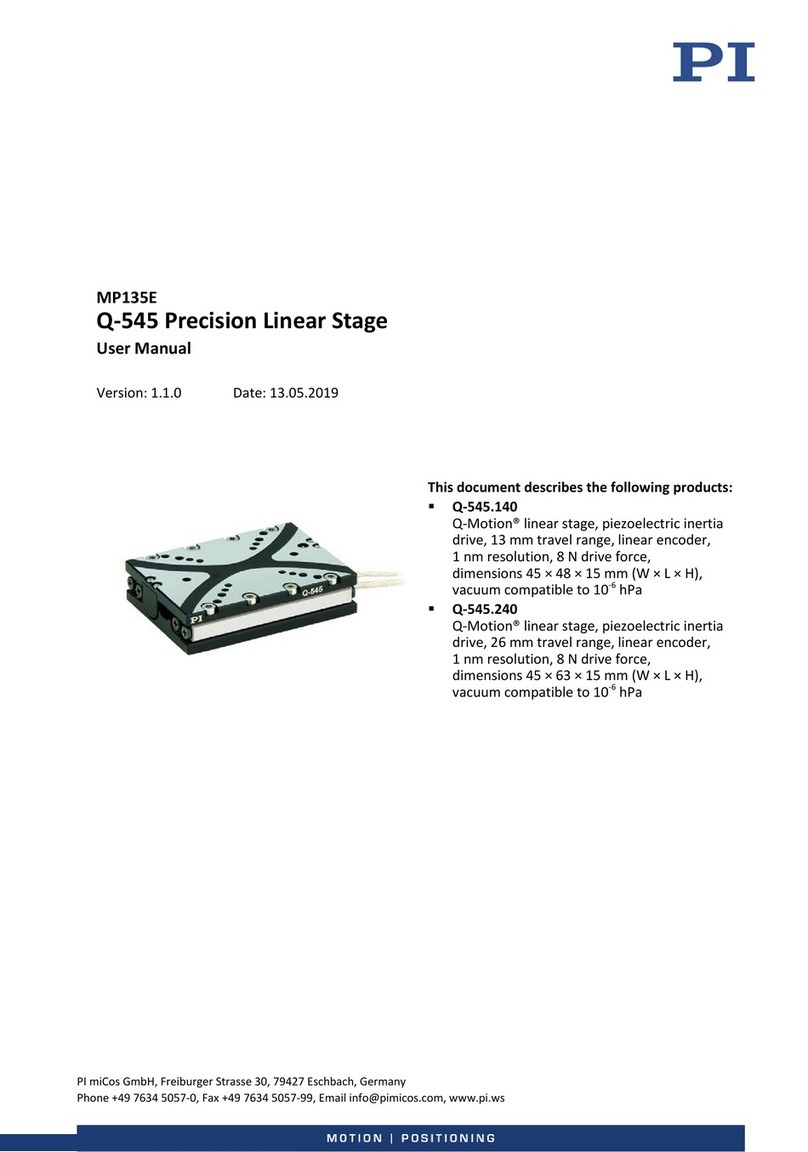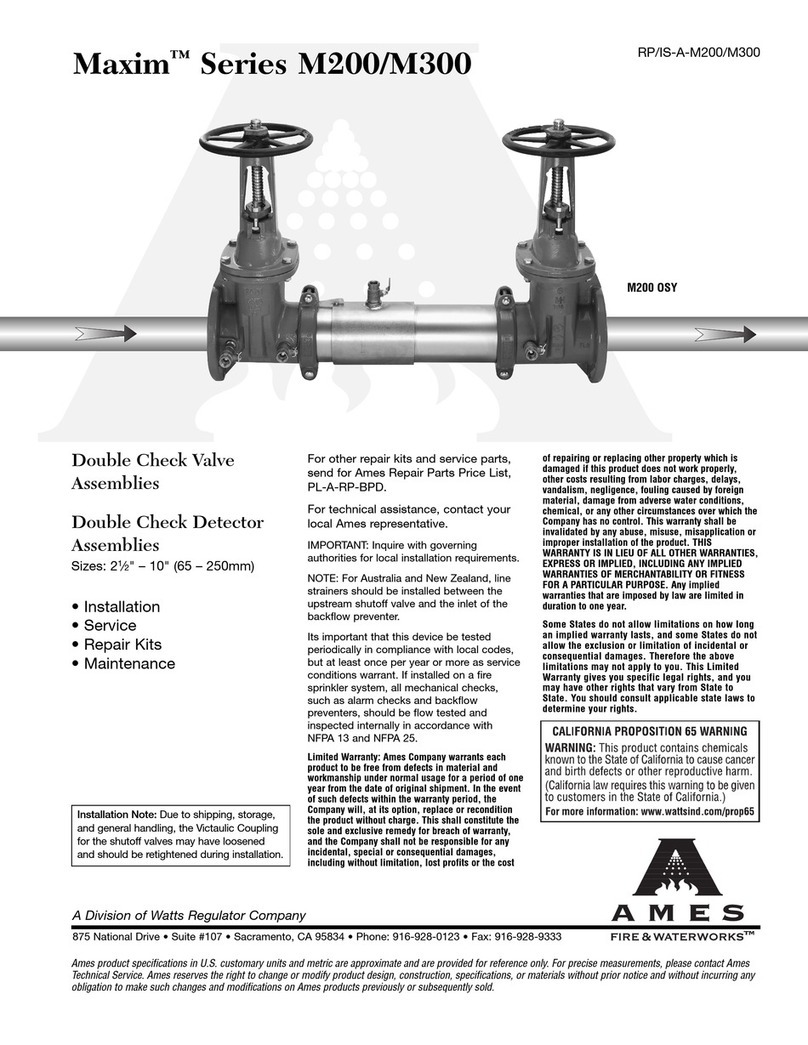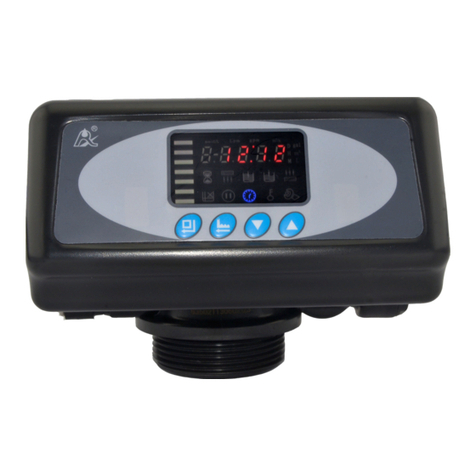Sferalabs Iono Pi User manual

"
Iono Pi User Guide
September 2018
Revision 006
IPBB13X Iono Pi board
IPBB13R Iono Pi RTC board
IPMB13X Iono Pi with Raspberry Pi 3 Model B
IPMB13R Iono Pi RTC with Raspberry Pi 3 Model B
IPMB13XP Iono Pi with Raspberry Pi 3 Model B+
IPMB13RP Iono Pi RTC with Raspberry Pi 3 Model B+
"

Safety information 4
Qualified personnel 4
Hazard levels 4
Safety instructions 5
General safety instructions 5
Battery 5
Introduction 7
Features 8
Hardware Installation 9
Iono Pi board 9
Iono Pi 9
Replacing the RTC backup battery 9
Usage and connections 11
Terminal blocks 12
Input/Output mapping 13
Power supply 14
Auxiliary voltage outputs 14
AIx: Analog inputs 15
Ox: Relays 16
L1: On-board application LED 16
TTL1: 1-Wire input/output 16
TTLx/DIx: TTL input/output or generic digital inputs 16
OCx/DIx: Open collector outputs or generic digital inputs 18
Real Time Clock 19
Software installation and configuration 20
Installing the Iono Pi utility 20
Installing the Real Time Clock software 21
Testing the Real Time Clock 21
Disabling Bluetooth and WiFi 22
Software development 23
Java and C application libraries 23
Analog inputs 23
Block diagram 25
Technical specifications 26
Dimensions 28
Disposal 29
1
User Guide

Installation and use restrictions 29
Standards and regulations 29
Safety instructions 29
Set-up 29
Conformity Information 30
EU 30
USA 30
CANADA 31
AUSTRALIA / NEW ZEALAND 31
Compliance information for Raspberry Pi 3 Model B 31
EU 31
USA 31
CANADA 31
Compliance information for Raspberry Pi 3 Model B+ 32
EU 32
USA 32
CANADA 32
2
User Guide

Be sure to always remove the power supply before connecting or
disconnecting the Iono Pi board to Raspberry Pi.
Follow all applicable electrical safety standards, guidelines,
specifications and regulations for installation, wiring and operations of
Iono Pi.
Carefully and fully read this Iono Pi user guide before installation.
Iono Pi is not authorised for use in safety-critical applications where a failure of the product
would reasonably be expected to cause personal injury or death. Safety-critical
applications include, without limitation, life support devices and systems, equipment or
systems for the operation of nuclear facilities and weapons systems. Iono Pi is neither
designed nor intended for use in critical military or aerospace applications or environments
and for automotive applications or environment. Customer acknowledges and agrees that
any such use of Iono Pi is solely at Customer's risk, and that Customer is solely
responsible for compliance with all legal and regulatory requirements in connection with
such use.
Sfera Labs S.r.l. may make changes to specifications and product descriptions at any time,
without notice. The product information on the web site or materials is subject to change
without notice.
Please download and read the Sfera Labs Terms and Conditions document available at:
http://www.sferalabs.cc
Iono and Sfera Labs are trademarks of Sfera Labs S.r.l. Other brands and names may be
claimed as the property of others.
#
Copyright © 2015-2018 Sfera Labs S.r.l. All rights reserved.
3
User Guide

Safety information
Carefully and fully read this user guide before installation and retain it for future reference.
Qualified personnel
The product described in this manual must be operated only by personnel qualified for the
specific task and installation environment, in accordance with all relevant documentation
and safety instructions. A qualified person should be capable of fully identifying all
installation and operation risks and avoid potential hazards when working with this product.
Hazard levels
This manual contains information you must observe to ensure your personal safety and
prevent damage to property. Safety information in this manual are highlighted by the safety
symbols below, graded according to the degree of danger.
Indicates a hazardous situation which, if not avoided, will result in death or serious
personal injury.
Indicates a hazardous situation which, if not avoided, may result in death or serious
personal injury.
Indicates a hazardous situation which, if not avoided, can result in minor or moderate
personal injury.
Indicates a situation which, if not avoided, can result in damage of property.
DANGER
WARNING
CAUTION
NOTICE
4
User Guide

Safety instructions
General safety instructions
Protect the unit against moisture, dirt and any kind of damage during transport, storage
and operation. Do not operate the unit outside the specified technical data.
Never open the housing. If not otherwise specified, install in closed housing (e.g.
distribution cabinet). Earth the unit at the terminals provided, if existing, for this purpose.
Do not obstruct cooling of the unit. Keep out of the reach of children.
Life threatening voltages are present within and around an open control cabinet.
When installing this product in a control cabinet or any other areas where dangerous
voltages are present, always switch off the power supply to the cabinet or equipment.
Risk of fire if not installed and operated properly.
Follow all applicable electrical safety standards, guidelines, specifications and regulations
for installation, wiring and operations of this product.
The Raspberry Pi board could generate a substantial amount of heat when the software
forces the CPU and/or GPU to operate at high load levels. Ensure that the product is
properly installed and ventilated to prevent overheat.
The connection of expansion devices to this product may damage the product and other
connected systems, and may violate safety rules and regulations regarding radio
interference and electromagnetic compatibility.
Use only appropriate tools when installing this product. Using excessive force with tools
may damage the product, alter its characteristics or degrade its safety.
Battery
Iono Pi RTC uses a small lithium non-rechargeable battery to power its internal real time
clock (RTC).
WARNING
WARNING
NOTICE
5
User Guide

Improper handling of lithium batteries can result in an explosion of the batteries and/or
release of harmful substances.
Worn-out or defective batteries can compromise the function of this product.
Replace the RTC lithium battery before it is completely discharged. The lithium battery
must be replaced only with an identical battery. See the "Replacing the RTC backup
battery" section for instructions.
Do not throw lithium batteries into fire, do not solder on the cell body, do not recharge, do
not open, do not short-circuit, do not reverse polarity, do not heat above 100°C and protect
from direct sunlight, moisture and condensation.
Dispose of used batteries according to local regulations and the battery manufacturer's
instructions.
WARNING
6
User Guide

Introduction
Iono Pi is an extremely versatile I/O module that combines several digital and analog input
lines, support for standard interfaces like 1-Wire and Wiegand and power relay outputs,
typical of modern PLCs, with the powerful quad-core ARM Cortex-A53 64-bit processor of
the Raspberry Pi 3.
Iono Pi adds other important features that are essential to use the Raspberry Pi 3 for
professional applications, like a robust power supply with wide voltage range (9÷28Vdc)
capable of up to 2.5A output current at 5V to the Raspberry Pi board, and an optional real
time clock with lithium back-up battery (Iono Pi RTC version).
Iono Pi can be used for an incredible range of applications, from data acquisition and
control, to home and building automation, as well as access control, hotel room control
solutions, environmental monitoring and many others. Software development is pure
Raspberry Pi, with the constantly growing list of standard and proprietary software
frameworks available on this platform.
Iono$Pi$can be employed both in industrial and residential environments, for professional
applications where extreme reliability, ruggedness and compliance with technical and
safety directives are required.
While also available as an add-on board, the fully assembled version is packaged in a
compact DIN standard case with omega-rail mounts, and certified to the relevant
standards, ready for use in professional installation.
The information contained in this manual covers all versions, except where explicitly stated
otherwise. The bare board is called “Iono Pi board”, while the assembled unit is simply
“Iono Pi”.
7
User Guide

Features
Iono Pi board:
✓9÷28Vdc power supply, with surge and reverse polarity protection, and 1.1A resettable
fuse
✓up to 2.5A max current to the 5V Raspberry Pi power supply input pins (at 24Vdc)
✓4 power relay outputs rated for 6A at 250V
✓2 analog voltage inputs 0÷30V
✓2 analog voltage inputs 0÷3V on internal pin-headers
✓7 configurable digital input/output pins
✓1-Wire and Wiegand support
✓optional real time clock with replaceable CR1025 Lithium / Manganese Dioxide back-up
battery
✓2 on-board LEDs, one for power supply and one controlled by a Pi’s GPIO line
✓power supply and I/O connections on a screw terminal block.
Iono Pi assembled module:
✓pre-assembled and tested Raspberry Pi 3 Model B or B+ with Iono Pi board, in a
standard 4 modules DIN rail case
✓side access to HDMI and 3.5mm jack for audio and composite video
✓access to all USB ports and Ethernet port.
8
User Guide

Hardware Installation
Iono Pi board
The Iono Pi board is supplied with all connectors pre-installed. No soldering is required.
You should connect Iono Pi to Raspberry Pi aligning the GPIO connector. Use appropriate
turrets/spacers to firmly bolt the two boards together, ensuring that no conductive part of
one board touches any part of the other board.
Be particularly careful to ensure there is enough clearance between the Ethernet and USB
connectors and the bottom of Iono Pi’s circuit board.
The GPIO connector of the Iono Pi board must be perfectly aligned to the Raspberry Pi's
GPIO pins. Turning on the Raspberry Pi and/or the Iono Pi board with the GPIO not
correctly connected will damage both the Raspberry Pi and Iono Pi board.
Iono Pi
The Iono Pi module comes pre-assembled with a Raspberry Pi 3 Model B or B+ board, in
a plastic standard DIN-rail case.
There is no need to open the case, unless you have to change the position of the jumpers
that select the voltage level of the TTL/DI inputs (see below), or to replace the internal
battery.
The Micro SD card (not provided) can be inserted through a small opening on the side of
the case. Use a small pen or paper clip to gently push the card in its slot.
Replacing the RTC backup battery
Iono Pi has an optional hardware real time clock with a dedicated long-life non-
rechargeable back-up battery.
The real time clock optional board is shipped with a replaceable Lithium / Manganese
Dioxide (Li/MnO2) battery installed.
The battery is only used to power the RTC chip when the main power is not available
(when the Raspberry Pi is off). Depending on operating conditions it should last up to two
years if the Iono Pi board is not powered, more if the Iono Pi receives external power.
Improper handling of lithium batteries can result in an explosion of the batteries and/or
release of harmful substances.
NOTICE
WARNING
9
User Guide

Worn-out or defective batteries can compromise the function of this product.
KEEP OUT OF REACH OF CHILDREN. Swallowing may lead to serious injury or death in
as little as 2 hours due to chemical burns and potential perforation of the esophagus.
Immediately see doctor.
Replace the RTC lithium battery before it is completely discharged. Replace the battery
every 5 years even if the battery is still working properly. The lithium battery must be
replaced only with an identical CR1025 Lithium / Manganese Dioxide (Li/MnO2) battery.
Do not throw lithium batteries into fire, do not solder on the cell body, do not recharge, do
not open, do not short-circuit, do not reverse polarity, do not heat above 100°C and protect
from direct sunlight, moisture and condensation.
Dispose of used batteries according to local regulations and the battery manufacturer's
instructions.
The RTC backup battery holder is soldered to a small circuit board next to the GPIO
connector. In the Iono Pi server, the battery is not accessible from the outside. You should
first remove the case top body to gain access to the Iono Pi circuit board.
Before opening the Iono Pi case, disconnect all power sources and any connection to
external devices, including USB cables.
Use a non-conductive pin or small tool to help extract the battery from its holder. Insert the
new battery with a gentle push. You don't need tools to insert the battery. The battery is
held into place by a spring contact.
Be sure to insert the battery so that the positive (+) terminal of the battery is in contact with
the outer body of the battery holder, and the negative (-) terminal is in contact with the
contact pad of the circuit board, as shown in the photo below.
Reversing the battery polarity may damage the product.
The real time clock will reset its time immediately when the RTC backup battery is
disconnected.
Follow these steps, in the exact order, to open the case and replace the battery:
1. Remove the microSD card (the card will be damaged if you open the case with the
card still inserted)
2. Remove the black plastic DIN rail hook
3. With a small flat screwdriver gently separate the bottom case and boards assembly
from the top cover
4. Use a non-conductive pin or small tool to help extract the battery from its holder
5. Insert the new battery with a gentle push. Respect the battery polarity
6. Replace the case bottom applying a gentle pressure on the corners
7. Replace the black plastic DIN rail hook
8. Insert the microSD card.
NOTICE
10
User Guide

RTC BACKUP BATTERY
Usage and connections
IONO PI CONNECTION EXAMPLE
11
User Guide

Terminal blocks
Iono Pi has two terminal blocks.
A 15 positions terminal block, used for power supply and low-power input/output
connections.
The maximum conductor cross section is 1.5 mm2(16 AWG), or 0.5 mm2when using
ferrules (highly recommended). Recommended stripping length is 5 mm. Screw thread is
M2. Never exceed 0.25 Nm torque when tightening the screws.
An 8 positions terminal block on the opposite side, for the power relays outputs.
The maximum conductor cross section is 2.5 mm2(12 AWG). Recommended stripping
length is 7 mm. Screw thread is M3. Never exceed 0.6 Nm torque when tightening the
screws.
THE IONO PI CIRCUIT BOARD
12
User Guide

Input/Output mapping
The following table shows the mapping of the inputs and outputs of the Iono Pi module into
the related pins of the Raspberry Pi board. These pins should not be used for other
functions.
Iono inputs and outputs
GPIO pin
Direction
Description
L1
GPIO7
out
On-board green LED
O1
GPIO17
out
Power relay 1
O2
GPIO27
out
Power relay 2
O3
GPIO22
out
Power relay 3
O4
GPIO23
out
Power relay 4
AI1
in
Analog input 1 (on terminal block) to A/D
AI2
in
Analog input 2 (on terminal block) to A/D
AI3
in
Analog input 3 (on board pin header) to A/D
AI4
in
Analog input 4 (on board pin header) to A/D
TTL1
GPIO4
in/out
1-Wire, Wiegand or generic TTL I/O
TTL2
GPIO26
in/out
1-Wire, Wiegand or generic TTL I/O
TTL3
GPIO20
in/out
1-Wire, Wiegand or generic TTL I/O
TTL4
GPIO21
in/out
1-Wire, Wiegand or generic TTL I/O
DI1
GPIO16
in
generic digital input 1
DI2
GPIO19
in
generic digital input 2
DI3
GPIO13
in
generic digital input 3
DI4
GPIO12
in
generic digital input 4
DI5
GPIO6
in
generic digital input 5
DI6
GPIO5
in
generic digital input 6
OC1
GPIO18
out
open collector output 1
OC2
GPIO25
out
open collector output 2
OC3
GPIO24
out
open collector output 3
GPIO2/SDA
I2C SDA line for the real time clock
GPIO3/SCL
I2C SCL line for the real time clock
GPIO8/SPI_CE0
ADC SPI interface
GPIO9/SPI_MISO
ADC SPI interface
GPIO10/PI_MOSI
ADC SPI interface
GPIO11/SPI_CLK
ADC SPI interface
13
User Guide

Power supply
Iono Pi can be powered with DC voltage only:
✓DC: nominal voltage range 9.0V to 28.0V.
Respect the correct polarity shown in the schematic diagram (+ -). The power supply
circuit implements reverse polarity protection using an auto resetting fuse and surge
protection up to ±500V/2ohms 1.2/50μs.
A blue on-board LED, also visible through the front panel of the DIN-rail case, is lit when
power supply is available.
When a Iono Pi board is used, never connect the Raspberry Pi micro-USB power plug.
The Iono Pi power supply stage is optimised to deliver up to 3A total current at 5V.
Considering the amount of current needed to drive the relays and open collector outputs, it
could provide up to 2.5A at 5V to the Raspberry Pi. Because Iono Pi has a 1.1A resettable
fuse (polyfuse) on the power supply line, the maximum current that its regulator can deliver
is also limited by this fuse, and depends on the input voltage. The following table lists the
typical measured output current of the power supply stage at different input voltages, and
the corresponding input current.
IONO PI POWER SUPPLY STAGE TYPICAL IN/OUT VOLTAGE AND CURRENT
Auxiliary voltage outputs
Iono Pi has an auxiliary 5Vdc voltage output pin on the terminal block, labeled 5VOUT, to
supply power to external 1-Wire devices or other low-power loads. Never exceed the
maximum rated current of 50mA on this output.
Another auxiliary voltage output pin, labeled VSOUT, is also available on the terminal
block. It is intended as the voltage source for small loads connected to the open collector
14
User Guide

(OC) outputs. Its minimum output voltage is approximately VS - 1V. Do not exceed the
maximum rated current of 300mA on this output.
AIx: Analog inputs
Iono Pi has two dedicated analog inputs (AI1 and AI2) on the low voltage terminal block.
The voltage input range is 0-30V. We use the MCP3204 4-channel 12-Bit A/D converter
from Microchip to convert the analog voltage to digital, with good resolution and sampling
speed.
The input impedance is approximately 200kOhm.
For convenience, a separate analog ground connection (A-GND) is avaliable on the
terminal block, next to AI1. A-GND should be used to connect the ground reference of the
analog input signals. Because the analog inputs are not galvanically isolated from the Iono
Pi's power supply, the A-GND line must be kept at the same voltage level of the negative
power supply line (VS-) and the GND connection on the terminal block. A-GND should
never be used as the negative power supply line or as a common ground for any other
purpose than the analog inputs ground reference.
The Iono Pi might be damaged if A-GND is not at the same voltage level of VS- and GND
and any amount of current is allowed to flow through A-GND.
Two additional inputs (AI3 and AI4) are available on an on-board expansion header (CN3)
for custom extensions. These inputs don’t have a voltage divider before the converter’s
inputs, and accept a voltage range of 0-3V, with an input impedance of approximately
200kOhm.
ANALOG INPUTS EXPANSION HEADER
WARNING
15
User Guide

Never apply voltage levels outside the specified operating limits to AI1, AI2, AI3 or AI4.
Ox: Relays
Iono Pi has four single pole single throw power relays, with normally open contacts.
The relays are driven by distinct GPIO lines on the Raspberry Pi.
L1: On-board application LED
L1 is a green on-board LED that is controlled by a GPIO lines on the Raspberry Pi.
Note that, depending on the Raspberry Pi operating system’s configuration, the GPIO line
may be in a high state by default on startup, causing the LED to turn on before your
application takes control of the GPIO line.
TTL1: 1-Wire input/output
TTL1 is a bidirectional TTL I/O line (0÷5V), connected to the Raspberry Pi GPIO4 pin
through$a bidirectional level shifter. It can be used as a 1-Wire bus line, but can also serve
as a generic TTL I/O or as the DATA0 line of a Wiegand interface.
The TTL1 front-end circuit has a 4.7kOhm pull-up resistor.
Never apply voltages outside the 0-5V range to this pin to avoid damage to the Iono Pi
board and Raspberry Pi.
TTLx/DIx: TTL input/output or generic digital inputs
TTL2/DI1, TTL3/DI2 and TTL4/DI3 are dual-purpose pins. Using internal jumpers, they
serve as TTL I/O lines or generic digital inputs.
When TTL2/DI1 is configured as TTL I/O, it can be used as the DATA1 line of a Wiegand
interface, in combination with TTL1, or any other generic TTL I/O function.
TTL3/DI2, configured as TTL I/O, can be used as the DATA0 line of a second Wiegand
interface, or any other generic TTL I/O function.
WARNING
WARNING
16
User Guide

TTL LEVEL CONVERTER CIRCUIT AND INPUT MODE SELECTION JUMPERS
TTL4/DI3, configured as TTL I/O, can be used as the DATA1 line of the second Wiegand
interface, in combination with TTL3, or any other generic TTL I/O function.
The TTL2-TTL4 front-end circuits have 4.7kOhm pull-up resistors.
When these pins are configured as generic digital inputs, they are protected by a resistor
network, and pulled to ground when not connected. They accept positive voltage levels up
to 40Vdc.
The DI1-DI3 front-end circuits have 2.2kOhm pull-down resistors.
Never apply voltage levels outside the specified operating limits to DI1, DI2 or DI3.
INPUT MODE SELECTION JUMPERS POSITION
WARNING
17
User Guide

To use the TTLx/DIx lines as generic inputs, the corresponding jumper (see table below)
should be set across the two pins closer to the terminal block.
Set the jumpers across the center and the pin opposite the terminal block to use the input
as TTL I/O.
Note that the Iono Pi board and the Raspberry Pi could be damaged if the jumpers are
configured for TTL mode and voltages outside the 0÷5V range are applied to the inputs.
OCx/DIx: Open collector outputs or generic digital inputs
OC1/DI4, OC2/DI5 and OC3/DI6 can be used as open collector (OC) outputs or generic
digital inputs. They are connected to discrete open collector drivers with a maximum
output current of 100mA.
These outputs are individually protected against over-current and short circuits. When the
over-current protection is triggered, the output will open, stopping the current flow. A simple
reset to 0 of the corresponding Raspberry Pi’s GPIO pin will reset the protection.
To drive a load using an OC output, connect its positive input to the VSOUT pin and the
negative input to the OC pin.
Note that the input resistors network is permanently connected to these pins so, even
when the open collector driver is open (the corresponding Raspberry Pi’s GPIO pin is low),
a small amount of current will still be able to flow to ground through an equivalent 6.9kOhm
resistor.
When not used as open collector outputs, the OC1/DI4, OC2/DI5 and OC3/DI6 can be
used as generic digital inputs, like DI1-DI3. They are protected by a resistor network,
pulled to ground when not connected, and accept positive voltage up to the VS power
supply voltage. When used to detect the status of dry contacts, it is recommended to use
VSOUT as the voltage reference.
The DI4-DI6 front-end circuits have 2.2kOhm pull-down resistors.
Never apply voltage levels outside the specified operating limits to DI4, DI5 or DI6.
Voltages above the power supply voltage (VS) will permanently damage the device.
Pin
Jumper
TTL2/DI1
JP3
TTL3/DI2
JP2
TTL4/DI3
JP1
WARNING
WARNING
18
User Guide

Negative voltages may also cause device malfunction or damage.
Real Time Clock
Iono Pi has an optional hardware real time clock with a dedicated long-life non-
rechargeable back-up battery.
The real time clock optional board is shipped with a replaceable Lithium / Manganese
Dioxide (Li/MnO2) battery installed.
The battery is only used to power the RTC chip when the main power is not available
(when the Raspberry Pi is off). Depending on operating conditions it should last up to two
years if the Iono Pi board is not powered, more if the Iono Pi receives external power.
Once the RTC modules and configuration files are properly installed, you will simply use
the date and time commands to control the hardware clock.
19
User Guide
Other manuals for Iono Pi
1
This manual suits for next models
6
Table of contents
Other Sferalabs Control Unit manuals
